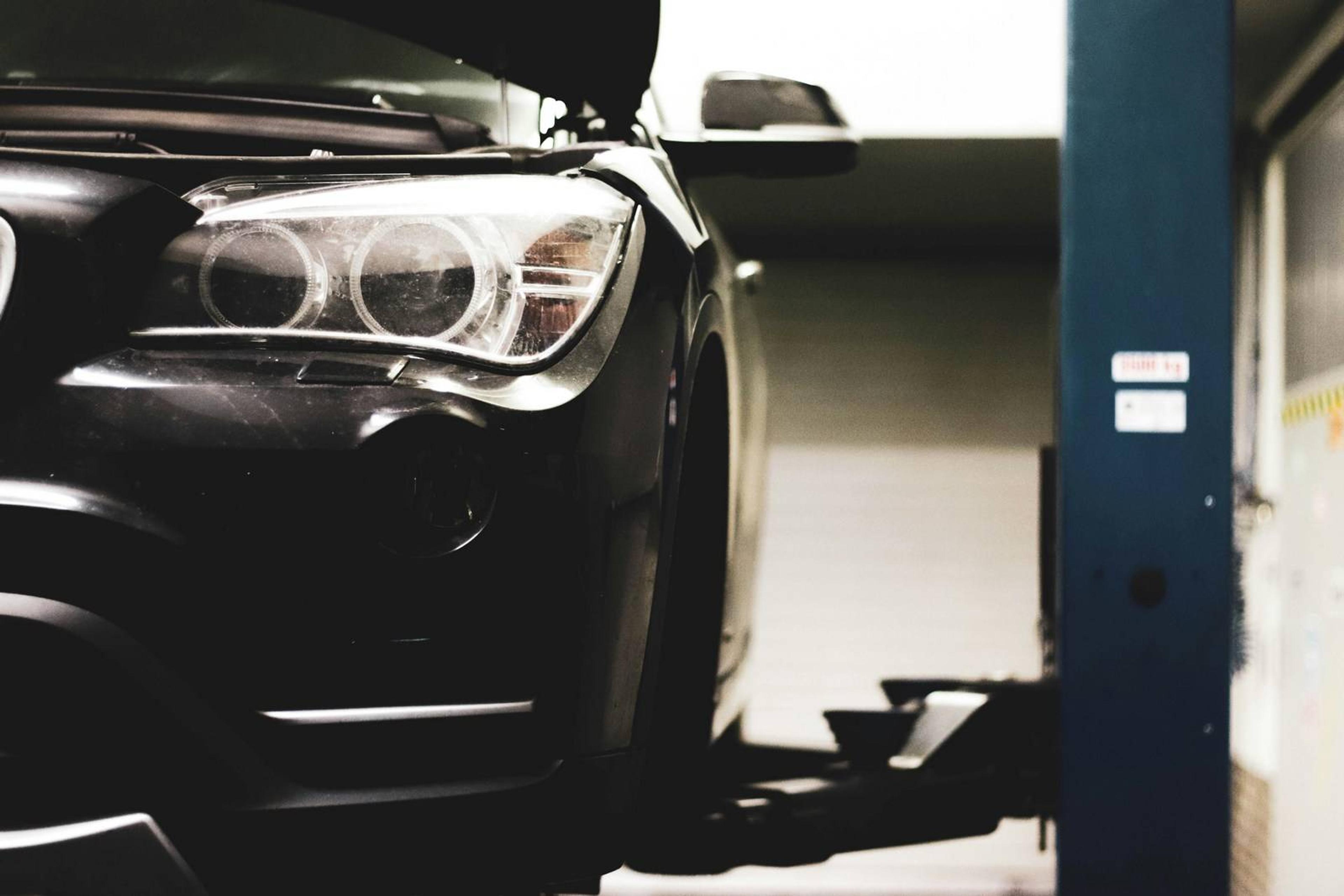11/07/2024
What is ANCAP? Understanding Australian vehicle safety ratings

Aivaras Grigelevičius

Safety has always been fundamental to car design, but modern vehicles go beyond basic protection. Today’s cars incorporate advanced technologies not only to ensure the safety of passengers but also to safeguard other road users.
To achieve the desired results, manufacturers are investing in new engineering methods, governments are imposing new regulations, and organizations like ANCAP play a crucial role in keeping progress on track. How? Let’s explore further.

Afraid of buying a wreck?
Check any VIN to learn a vehicle's history!
Introduction to ANCAP
The ANCAP (Australasian New Car Assessment Program) is one of the oldest car safety performance assessment organizations in the world. Established in 1992, ANCAP made a name for itself by verifying manufacturers’ claims by showing how real cars perform in simulated real-life crash scenarios. Before the launch of the ANCAP program, the buying public had no understanding or knowledge of how cars behaved in an accident until they experienced one themselves.
Furthermore, in the early 1990s, only a few manufacturers had thorough programs to test cars' safety because there was no real motivation to invest in expensive techniques and safety features.
Understanding ANCAP safety ratings

Techniques used to evaluate vehicles focus on the protection of vehicle occupants and pedestrians and the vehicles' ability to avoid crashes through driving-aids evaluation tests.
ANCAP uses a five-star system to rate car safety. A vehicle with the highest score in the ANCAP safety tests can receive 5 stars, while the lowest-scoring candidate can return from the tests with an absolute zero.
In theory, the higher the safety rating, the safer the car is. However, as the organization increasingly focuses on driving aids, a lower score may be impacted not by the car's performance in physical safety tests but by the effectiveness of features like lane-keeping assist or driver monitoring systems. These features rarely help you avoid injury as effectively as extra airbags or a more robust car structure.
ANCAP crash tests
Every car must undergo physical crash tests to evaluate its protection for occupants and pedestrians. Here is the order of these tests:
- Full-width test. The testing procedure requires that cars collide with a solid wall lacking any deformable element at a speed of 50 km/h.
- Frontal offset test. This test mimics a head-on collision during which 50% of the vehicle's front hits a barrier at 64 km/h.
- Side impact test aims to replicate crashes between two vehicles at a 90-degree angle.
- Pole impact test replicates a collision with a narrow object, such as a tree or pole.
- Pedestrian protection test. This test measures potential injuries to pedestrians hit by vehicles, focusing on the head, upper leg, and lower leg impacts.
- Whiplash protection. It evaluates how effectively the vehicle's head restraints prevent neck injuries in rear-end collisions.
After the first evaluation stage, all cars must go through the second assessment stage. ANCAP also reviews the performance of safety features and how driving aids work in the real world:
- Automatic braking systems. The organization tests how automatic braking systems work by identifying objects, such as cyclists, pedestrians, and other vehicles.
- Lane-keeping assistance. ANCAP also tests how lane-keeping assistance systems work and behave and how drivers can trust them in real-life situations.
- Emergency avoidance systems. This test helps to evaluate how effectively emergency avoidance systems help avoid crashes.
- Speed assistance systems. ANCAP evaluates the functionality of cruise control. If the car has adaptive cruise control as standard, the organization evaluates how it behaves accordingly.
- Driver monitoring systems. Today, many cars monitor drivers' attention and their health. ANCAP evaluates the system and its behavior in different scenarios.
According to the newest ANCAP protocols, the organization also evaluates car-to-motorcycle, direct driver monitoring systems, and child presence detection systems.
Comparing ANCAP and other NCAP organizations

The Australasian New Car Assessment Program is not the only one keeping track of manufacturers' progress. It has equivalent organizations worldwide, including the NHTSA (the US) and Euro NCAP (Europe).
While all of them have the same main goal, their methods and reliability are quite different.
ANCAP geography and rating check
ANCAP only tests cars destined for the Australian and New Zealand markets. Since these markets have similar car regulations, ANCAP takes advantage of this by covering both markets as one.
While ANCAP covers vast portions of the safety assessments, the organization uses much data from the Euro NCAP.
If the same model is sold across the European, Australian, and New Zealand markets and has the same standard safety features and driving aids, the ANCAP transfers the Euro NCAP rating to its system.
NCAP geography and rating check
Today, there are seven NCAP organizations in the world, including ANCAP. Like ANCAP, other organizations work in specific regions, each with distinct differences and requirements, leading to variations in overall ratings.
Euro NCAP and IIHS (Insurance Institute for Highway Safety) are the primary and leading NCAP organizations globally. They consistently employ the strictest and most advanced techniques to assess new car safety.
Euro NCAP uses a five-star rating system to evaluate overall vehicle safety, while IIHS uses a simpler system, ranging from Poor to Good+, to assess test performance.
Other organizations, such as Latin NCAP or Global NCAP, employ less stringent safety evaluations due to varying regulations and requirements for standard safety equipment. However, many safety protocols used are similar to those of Euro NCAP. For instance, Latin NCAP utilizes Euro NCAP protocols for pedestrians, side impacts, and other tests.
Importance of ANCAP safety ratings
The rapid development of technology and tools for creating cars has certainly improved manufacturers' ability to produce vehicles that can help save lives.
The most significant advantage of the ANCAP safety ratings is that consumers can assess safety ratings, compare any new car on the market, form an impression, and draw definitive conclusions.
Buyers' behavior leads manufacturers to invest more in passive and active safety systems, which could perform better in the evaluation and, later, in real-life crashes.
Moreover, safety ratings can function as an effective selling proposition for manufacturers, encouraging competition to improve safety standards throughout the industry.
Other car safety factors to consider

Airbags and advanced driving aids undoubtedly play a significant role in reducing fatalities on the road. However, several other factors also influence safety:
- Maintenance. Worn-out suspension parts reduce cars' stability, and faulty sensors could lead to airbag malfunction. Keeping the vehicle in good condition is crucial for ensuring safety for both car occupants and surrounding road users.
- Road rage. Being angry behind the wheel is not a good idea because acting on pure emotion could lead to accidents and fatalities.
- Quality tires. Tires are the only contact between the vehicle and the road surface, affecting traction, handling, and braking performance. Investing in high-quality tires greatly improves vehicle safety and the overall driving experience.
Check the vehicle history report to find out more about it’s damage history
Safety ratings are valuable for distinguishing the safest cars from others. Still, these ratings are more critical for new car buyers who seek the best and safest vehicle for their budget.
When a car is used, the importance of safety ratings becomes obsolete. Due to the diverse maintenance and ownership history, used vehicles could behave differently in a crash after one year of ownership.
Safety ratings will not tell you if the used car was in an accident, how extensive the damage was, and other important details, while the vehicle history will, including title and mileage changes. Sample a history report to see what you can expect, and then use your car's VIN to find out crucial details about its history.

Check your VIN
Avoid costly problems by checking a vehicle's history. Get a report instantly!
Frequently asked questions

Article by
Aivaras Grigelevičius
Aivaras has been excited about cars since he was a little kid. Later, this passion for drivable objects (and everything that surrounds them) grew into work as an automotive journalist. Since then, Aivaras has written for several different magazines, covering anything with an accelerator pedal. He has a soft spot for cars with an Alfa Romeo badge.
